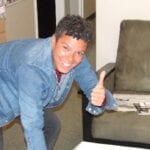Peter and Murry Corren, education officials, social justice activists, independent school representatives, and the RCMP held a three-day closed door meeting last month to begin drafting a new Grade 12 Social Justice course with promised queer content.
The Correns, who this spring settled a human rights complaint with the education ministry giving them substantial involvement in drafting the new course and reviewing the curriculum for queer inclusion, were among some 40 participants who gathered to “discuss and give their input [on] what the new optional high school course might comprise or look like, [and] to develop a framework to assist the curriculum writing team,” the ministry invitation states.
Media were not permitted to attend the Sep 18-20 meeting at Richmond’s Executive Airport Plaza Hotel and Conference Centre.
But according to some of the meeting’s participants, much of the talks centered on people’s perspectives on social justice, and how those varied perspectives could be handled in a classroom context.
Leading the government team at the meeting were ministry director Monica Pamer, social justice coordinator Adrienne Gnidec, and diversity and curriculum specialists Nell Ross and Pierre Gilbert.
Gnidec facilitated the first morning’s session with a discussion on critical thinking and ethical reasoning, an approach which two Vancouver School Board (VSB) anti-homophobia consultants say gave participants a sense of the framework the ministry is currently using–a framework many feel “dehistoricized and decontextualized oppression.”
Traditionally, explains VSB consultant Jody Polukoshko, the classroom learning environment gives priority to a Western, hierarchical mode of knowledge transmission as opposed to a process that allows teachers and students the space to explore the nature of social justice in their own lives, including the ability to confront their own biases and assumptions, and even complicity with oppressive language and behavior.
“Many of the concerns expressed by the participants were focused around making the curriculum meaningful for students, placing students at the centre of the curriculum, and making sure that there was a place for students to do some real thinking and learning about their own experiences and identity,” says Polukoshko.
“There was a lot of discussion as well about how we can encourage students to take ownership of their own learning,” she continues. “and for their learning to translate into changing the way that they participate in the world on a day-to-day basis. We were also concerned about making sure that teachers were adequately supported in their teaching of the course.”
Polukoshko and VSB colleague Glen Hansman expressed disappointment that youth and youth organizations were under-represented at the meeting, and also marked the absence of people of colour, indigenous people, disability activists and anti-poverty activists.
“The aim of the ministry was to invite umbrella organizations to the workshop,” explains Polukoshko, “and I think this meant that many grassroots or youth-driven organizers were excluded.”
For Hansman, a key question is whether it’s possible to teach social justice without giving credence to youth agency, or creating an environment where students can put their idealism to work.
He notes there are youth who do “amazing work already” in social justice areas and therefore a need to harness their voices and include them in Social Justice 12 discussions.
Addressing this question is particularly important, he adds, when approaching the convergence of sexuality, gender and race, which, he points out, are conceived of quite differently in different contexts.
“Youth have quite different notions of what it means to be straight or gay or transgender or queer than the adults around them might have. A lot of the youth that Jody and I work with have quite fluid notions of sexuality/gender that are quite different from youth of only a decade ago. They’ve taken apart these labels and put them back together in ways that don’t necessarily mesh with adult conceptualizations of similar terms, and do not necessarily view themselves as at-risk or powerless victims,” explains Hansman.
“Nor can we assume there is a unitary gay/lesbian/bi identity, straight identity, First Nations identity, woman identity, etc,” he continues. “I think it is important to consider this whenever we are discussing minorities and marginalized groups. Queer youth, and particularly queer youth from ethnic minority communities, might not recognize themselves as part of a homo-hetero dichotomy or a gay community–ie predominantly white and of an older age bracket.”
Polukoshko says she is confident the queer activists who end up working on the curriculum will be good advocates for queer youth and teachers, but says the meeting, which she understands will be the only one of its kind before the curriculum writing process begins this fall, didn’t really solve any problems about delivery or content.
The ideal situation, she says, would be for more and continuous consultation, noting that participants were quite vocal about having ongoing discussions.
“My guess is it’s full steam ahead, but it’s important that all of us activists stay in the process,” she says.
“I think it is very important that this curriculum get into schools quickly–it is long overdue. However, I don’t believe that any of the participants were interested in sacrificing content in favor of timelines,” she continues.
“We all want this curriculum to succeed, and spent a lot of time discussing the factors necessary for social justice to be addressed well in schools, and for the issues raised by Murray and Peter Corren in court to be undertaken explicitly and proactively. I think ongoing consultation and discussion is essential, and I sincerely hope that the ministry’s timeline includes opportunities for community feedback, and a willingness to address the complexity of social justice in schools.”
A draft version of the new Social Justice course is expected to be available for public review and feedback next spring.
The new course is expected to undergo a test run in the 2007/2008 school year, with full implementation the following year.

 Why you can trust Xtra
Why you can trust Xtra


